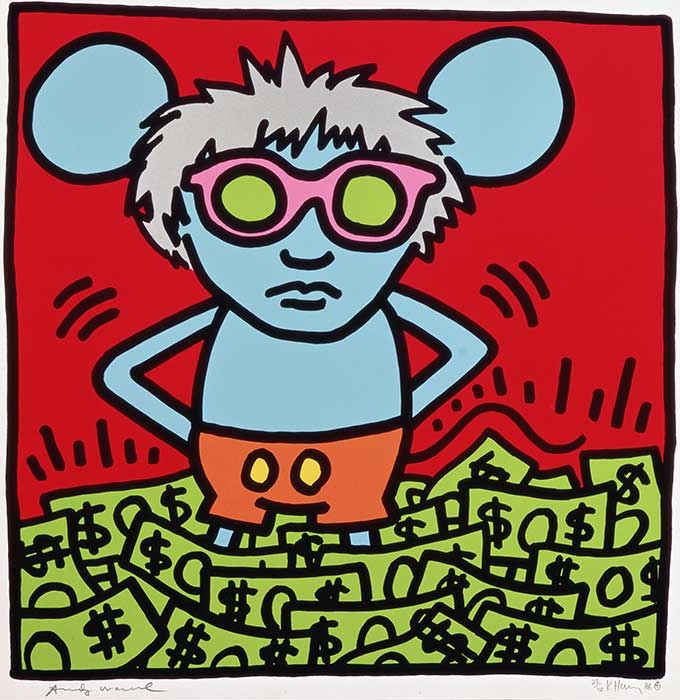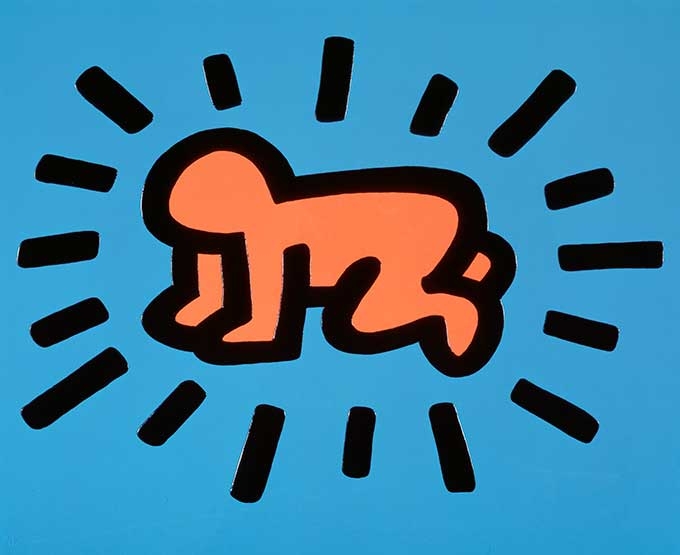Post Pop: Prints of Keith Haring
–
Full of playful energy and vibrant color, this exhibition follows the illustrious career of Keith Haring from 1982, when he made his first silkscreen prints, to his death from AIDS related complications in 1990.
A prolific artist and activist, Haring sought to reach the broadest possible public by blurring the distinction between fine art and popular culture. Taking a cue from the graffiti artists of the 1970s, he risked arrest to draw animated, lively figures in New York subway stations. Ironically, within a few years, the City of New York Department of Sanitation asked him to design a public anti-littering campaign. Throughout his life, Haring completed some 50 public murals, both in this country and abroad, in parks, hospitals, museums and orphanages. For a number of these projects he worked with cadres of enthusiastic teenage volunteers. He conducted art workshops with children, created logos and posters for public service agencies, and donated artwork to benefit health centers and disadvantaged communities throughout the world.

Keith Haring, Andy Mouse, 1986, silkscreen, 38 x 38 inches. © Keith Haring Foundation [KHP-151A]
With the encouragement of his friend Andy Warhol, in 1986 the artist launched his “Pop Shop,” where he sold affordable merchandise. Clothing, magnets and radios, for example, were emblazoned with his designs, as well as stickers, coloring books, and other inexpensive paraphernalia. Although he faced criticism for such a seemingly commercial endeavor, his aim was never financial gain, but to make his imagery more widely accessible, and indeed, his designs quickly became even more widely recognizable and popular. In 1988, he opened another equally successful Pop Shop in Tokyo.
Much of the same imagery that appeared on merchandise can often been seen in Haring’s editions on paper, as well as in his paintings, drawings, and sculptures. Some of his unique works have brought seven-figure sums in fine art auctions over the years. His visual lexicon incudes a number of iconic symbols: the barking dog, “radiant baby,” flying televisions, spaceships, pyramids, and a three-eyed cartoon face. However, Haring’s energetic, confident line often depicted darker meditations on racial inequality, the excesses of capitalism, and anxiety about the burgeoning domination of technology.

Keith Haring, Icons, 1990, silkscreen with embossing, 21 x 25 inches. © Keith Haring Foundation [KHP-174-5]
Influenced by cartoonists Walt Disney and Dr. Seuss, as well as by friends and fellow artists such as Warhol and William Burroughs, Haring’s style is rooted in the popular culture of the 1980s—the Reagan years. Apartheid and cold war tensions exist in tandem with breakdancing, MTV, and the outbreak of the HIV/AIDS epidemic. Haring’s work is a witness to these times, but is also informed by the artist’s serious interest in semiotics—the study of signs and symbols—and by a solid knowledge of art history.
This exhibition of 43 prints in a variety of sizes covers the full range of Haring’s graphic work. It includes silkscreens and lithographs as well as an unusual set of etchings illustrating a text by Burroughs. All of the works are on loan from The Keith Haring Foundation, which was founded by the artist before his death and is dedicated to sustaining, expanding, and protecting the legacy of Keith Haring, his art, and his ideals. The Foundation supports not-for-profit organizations that assist children as well as organizations involved in education, research, and care related to AIDS.
